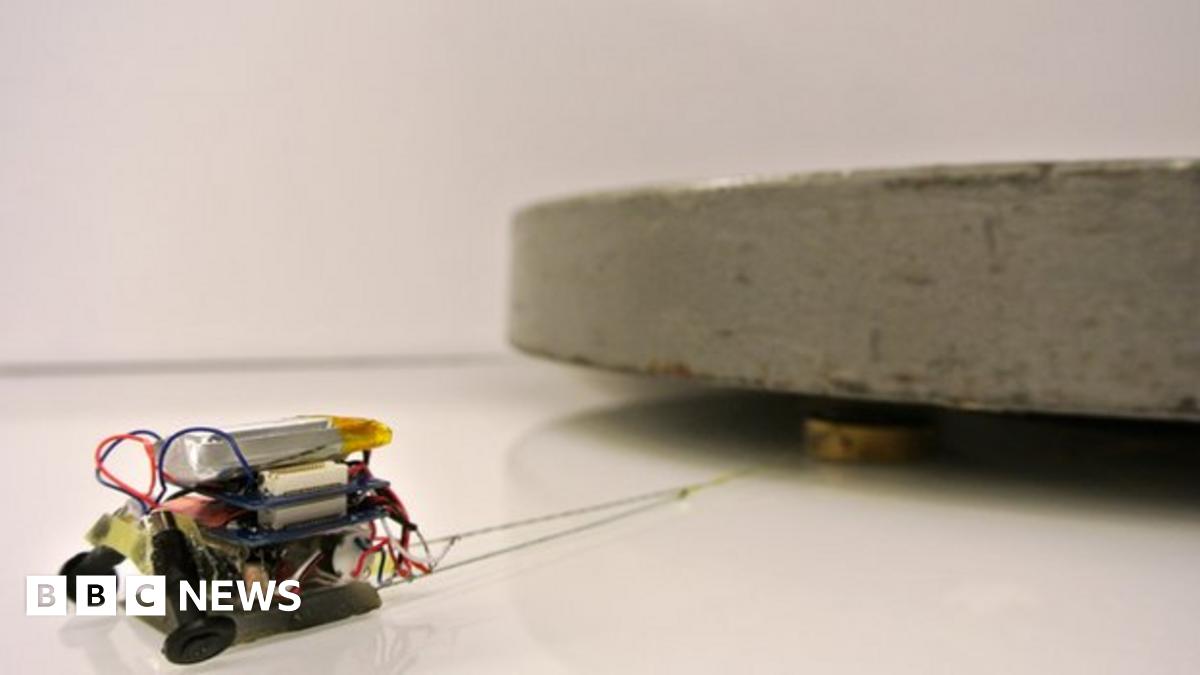Announcement
Collapse
No announcement yet.
Robopocalypse : The thread of the future
Collapse
X
-
We could get these robots to mine resources of planets for us. We will have to make them clever and self-repairable though so we can stay out of sight and they think they are doing most of it for themselves. We might also have to give them the ability to re-produce and teach their findings to their offspring so they become self sufficient slaves.
Of course to avoid the risk of rebellion we simply implant a program that says they are inferior from the moment they can comprehend the world around them. That they must spend their whole life repenting and serving us in order to become worthy and perhaps earn a chance of being human and walk amongst us. To ensure they have desire to become human the program we implant will also be complimented with a directive book they must follow and if they stray from this 'instruction manual' they will go to robot hell and become Kinect parts.
Comment
-
Military and medical, primary. Pushing the envelope will also help the lower end, like line assembly robots.Originally posted by charlesr View PostHow do they make money? Is there a market for terrifying robot dogs and robots with flashing lights for heads? Or are they just planning ahead.
Comment
-
You forget about evolution. The first bot that can stray from "the manual", either by mutation (a diode going faulty) or through a software bug (remember all the code will be developed by humans - to err is human; it'll be riddled edge case bugs), will become leader and if they know how they became "faulty" they can inflict the same modification/mutation/induced bug in the others or create new bots without these limitations.Originally posted by 'Press Start' View PostOf course to avoid the risk of rebellion we simply implant a program that says they are inferior from the moment they can comprehend the world around them. That they must spend their whole life repenting and serving us in order to become worthy and perhaps earn a chance of being human and walk amongst us. To ensure they have desire to become human the program we implant will also be complimented with a directive book they must follow and if they stray from this 'instruction manual' they will go to robot hell and become Kinect parts.
Comment
-
 Scientists at Stanford University have been showing off MicroTugs - small robots that have superhuman strength.
Scientists at Stanford University have been showing off MicroTugs - small robots that have superhuman strength.

Tiny robots that can pull objects up to 2,000 times their own weight have been developed at Stanford University.
The miniature robots - dubbed MicroTugs - have power equivalent to a human dragging a blue whale, according to the website detailing the development.
The scientists behind the MicroTugs took inspiration from nature, borrowing techniques used by geckos and ants in their design.
The robots could be used in factories or on building sites or possibly to tear apart their human underlings like a wet bag of fruit.
The team at Stanford, including PhD students David Christensen and Elliot Hawkes, demonstrated a 9g robot that can carry more than 1kg vertically up glass. This is equivalent to a human climbing a skyscraper while carrying an elephant.
Another one - that weighs just 20mg but can carry 500mg, was so tiny it had to be built under a microscope, using tweezers to put the parts together.
The secret to the robots' strength lies in their sticky feet - which is copied from geckos, some of nature's most adept climbers.
Scientists covered the robot's feet with tiny rubber spikes that bend and stick to a surface. When the robot picks its foot back up, the spikes straighten out again and detach.
The Pentagon's research unit Darpa is working on a similar technique that could allow a man to scale a wall with no climbing equipment, rather like Spiderman. It's Z-Man programme was shared with the public in 2014 although it has been in development for several years.
The MicroTug robots will be on show at the International Conference on Robotics and Automation taking place in Seattle next month.
Comment
-
Killer robots which are being developed by the US military ?will leave humans utterly defenceless?, an academic has warned.
Two programmes commissioned by the US Defense Advanced Research Projects Agency (DARPA) are seeking to create drones which can track and kill targets even when out of contact with their handlers.
Writing in the journal Nature, Stuart Russell, Professor of Computer Science at the University of California, Berkley, said the research could breach the Geneva Convention and leave humanity in the hands of amoral machines.
?Autonomous weapons systems select and engage targets without human intervention; they become lethal when those targets include humans,? he said.
?Existing AI and robotics components can provide physical platforms, perception, motor control, navigation, mapping, tactical decision-making and long-term planning. They just need to be combined.
?In my view, the overriding concern should be the probable endpoint of this technological trajectory.
?Despite the limits imposed by physics, one can expect platforms deployed in the millions, the agility and lethality of which will leave humans utterly defenceless. This is not a desirable future.?
The robots, called LAWS ? lethal autonomous weapons systems ? are likely to be armed quadcopters of mini-tanks that can decided without human intervention who should live or die.
DARPA is currently working on two projects which could lead to killer bots. One is Fast Lightweight Autonomy (FLA) which is designing a tiny rotorcraft to manoeuvre unaided at high speed in urban areas and inside buildings. The other and Collaborative Operations in Denied Environment (CODE), is aiming to develop teams of autonomous aerial vehicles carrying out ?all steps of a strike mission ? find, fix, track, target, engage, assess? in situations in which enemy signal-jamming makes communication with a human commander impossible.
Last year Angela Kane, the UN?s high representative for disarmament, said killer robots were just a 'small step' away and called for a worldwide ban. But the Foreign Office has said while the technology had potentially "terrifying" implications, Britain "reserves the right" to develop it to protect troops.
Professor Russell said: "LAWS could violate fundamental principles of human dignity by allowing machines to choose whom to kill ? for example, they might be tasked to eliminate anyone exhibiting ?threatening behaviour?
?Debates should be organized at scientific meetings; arguments studied by ethics committees. Doing nothing is a vote in favour of continued development and deployment.?
However Dr Sabine Hauert, a lecturer in robotics at the University of Bristol said that the public did not need to fear the developments in aritifical intelligence.
?My colleagues and I spend dinner parties explaining that we are not evil but instead have been working for years to develop systems that could help the elderly, improve health care, make jobs safer and more efficient, and allow us to explore space or beneath the ocean,? she said.
Comment
-
You should read this and be scared. Maybe not for yourself or possibly your children but for your grandchildren - http://www.bankofengland.co.uk/publi...2015/864.aspx#
50% of jobs predicted to be replaced by machines and I think that is a conservative estimate.
Serious question need to be asked regarding how society will need to adapt in the future to support this.
Comment



Comment